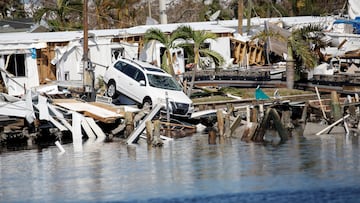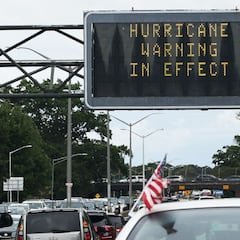What is the connection between hurricanes and climate change?
It’s been increasingly difficult to determine how mild or devastating hurricane season could be. Climate change plays a role in the behavior of storms.


Hurricane season brings about storms that have varying levels of intensity, and it has been increasingly difficult to predict how these weather systems will behave from year to year.
Hurricanes are complex weather phenomena that can be influenced by various factors, and scientists say that climate change is causing them to become more damaging.
There are several key points to consider regarding the connection between hurricanes and climate change.
READ ALSO: This is the forecast for the 2023 hurricane season
ICYMI: NOAA forecasters estimate 12 to 17 named Atlantic storms, of which five to nine of those will develop into hurricanes. One to four of them will become major hurricanes during the June 1 to Nov. 30 season https://t.co/KMg9VIetQH pic.twitter.com/NpHcmwr1dk
— Reuters (@Reuters) May 28, 2023
Intensity
Climate change is worsening the impact of hurricanes on the US by increasing their intensity, according to the Center for Climate and Energy Solutions. Warmer ocean temperatures provide the energy that boosts hurricanes. As the climate warms, sea surface temperature tends to rise. Higher ocean temperatures lead to increased evaporation which provides more moisture to the atmosphere, thus fueling more powerful storms.
Speed
Changes in the atmosphere may also be contributing to the pace at which hurricanes now travel. These storms are moving more slowly over surfaces than they previously did, giving them more time to bring destructive rain and strong winds to coastal regions.
READ ALSO: FEMA’s emergency hurricane kit guidance
Storm surge
Storm surge refers to the abnormal rise in sea levels during a hurricane. This can be exacerbated by already-rising sea levels caused by climate change. The melting of glaciers and ice caps have contributed to this increase, which when combined with storm surges can unleash calamitous flooding in coastal areas. The Geophysical Fluid Dynamics Laboratory says that sea level rise can cause higher coastal flood levels for tropical cyclones that do occur.
Other factors affect hurricanes
Related stories
Multiple factors affect the behavior of hurricanes, including atmospheric conditions and natural phenomena like El Niño and La Niña, which are both associated with changes in weather patterns.
Attributing a particular hurricane purely to climate change is complicated, but general trends indicate that climate change can contribute to hurricanes becoming more powerful, more intense, and more deadly.

